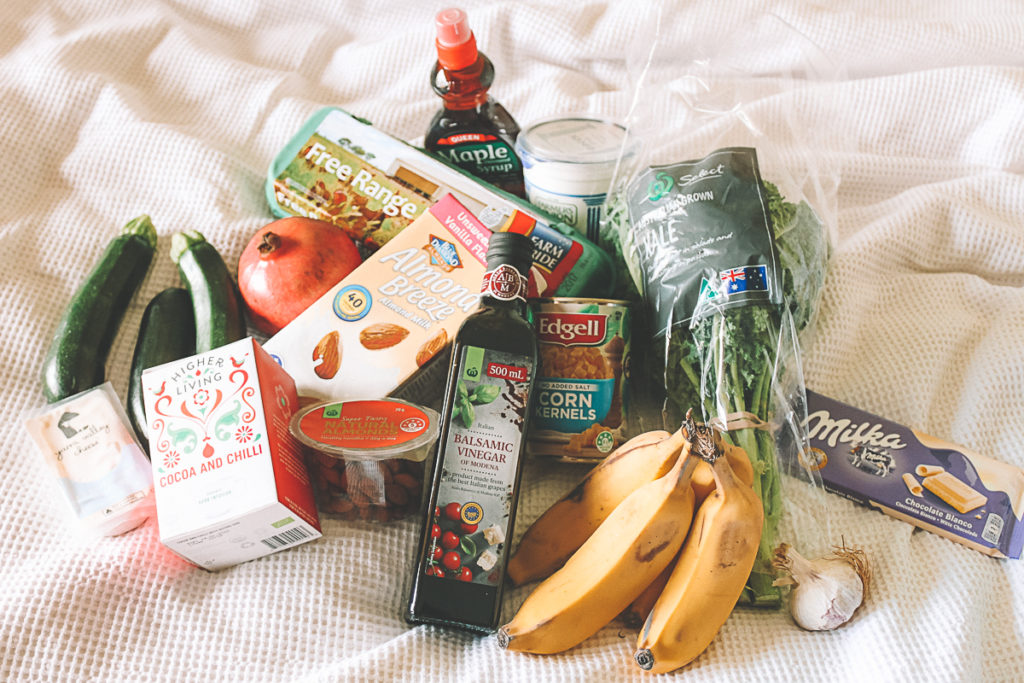COVID-19 has had a devastating impact on people around the world. While most governments have offered financial support to their own citizens, this support often hasn’t been extended to international students. Fortunately, international students are able to receive support from their educational institutions.
Thousands of food hampers are being distributed to international students struggling to access supplies in the COVID-19 pandemic, with the NSW Government through Study NSW teaming up with Foodbank to supply groceries and pantry staples. International students in NSW can access a hamper by completing this online form, or calling Foodbank NSW & ACT on (02) 9756 3099 to find their closest distribution centre.
The international student services manager at Macquarie University, Natalie Lastary Dewi Lee, has been leading cultural cooking workshops to show international students how to use the ingredients from these food hampers interestingly and creatively.
Insider Guides spoke to Natalie and to Adam Loftus of Foodbank about the benefits of these workshops. We also got them to share some tips for creative cooking on a budget.
An initiative inspired by COVID-19
The COVID-19 pandemic has been a difficult time for everyone, but particularly for international students. Many international students lost work during the pandemic. As a result, they have struggled to make ends meet.
Adam helped put together the Foodbank food hamper program for international students who were struggling. “We have a really healthy number of students – between a thousand and two thousand – who have signed up to receive the hamper,” says Natalie. “This program could potentially go on to the end of the year or even to next year”.
Adam said that Foodbank is “looking to extend the program to June 2021, but either way, Foodbank will be there to support international students.”
However, Natalie didn’t want to stop at giving food hampers to students. She wanted to use the opportunity to connect students – both to each other and to their own cultures – through food and cooking.
Battling homesickness with food
Lockdowns have had a huge impact on international students in Australia. Many students were either unable to return home for long periods, or even unable to visit their friends in Australia. As a result, many experienced even stronger feelings of homesickness and loneliness than they otherwise would have.
Not only does cooking familiar recipes help to alleviate symptoms of homesickness, but Natalie also says that the communal aspect of cooking can act as a kind of therapy.
“While they’re waiting for the rice to cook, they’re talking to each other and sharing experiences of homesickness,” she says.
For Natalie, mental health is an important focus of these cooking workshops. “We held a workshop for Mental Health Week and this helped to make those students studying in Australia feel a bit closer to home, while also sharing tips on where to go if they have any mental health issues.”
These workshops have been very successful for students. More than 60 students registered to attend the workshop that focused on Bangladeshi cuisine. “The students really enjoy the laid-back and communal atmosphere of our workshops,” says Natalie, laughing as she acknowledges that the workshops are a productive way for students to procrastinate.
Additionally, Natalie and Adam are both excited at the prospect of bringing a celebrity chef into their workshop. Manu Feildel, a judge on the Australian cooking show My Kitchen Rules, is one of the most notable names mentioned. It’s clear that Natalie’s cooking workshops are going to continue to grow in scope and popularity.
Cooking creatively on a budget
Natalie and Adam are both doing incredible work for international students in NSW and around the world. Having operated the cooking workshops for a while now, they’ve become quite knowledgeable about cooking creatively on a budget. Here are some of their tips.
What are the best staple ingredients to have in the pantry for creative, low-budget cooking?
“The hampers are a great example of staple ingredients. It’s best to choose non-perishable items, which the hampers focus on. So, items such as tinned tuna, rice, beans, and so on,” says Natalie.
Having a pantry stocked with staple ingredients cuts down on the need to constantly go to the shop for food, and allows for ‘spontaneous cooking’. “These non-perishable items form the spine of many different dishes, so having these available makes cooking very easy.”
What are some of the best low-budget tools for creative cooking at home?
“We try and keep our workshops as accessible as possible,” says Natalie. “Some students live abroad with their parents, others live away from their parents in Australia. For that reason, we try to keep things simple. Even the most basic tools can be used to prepare a meal such as adobo.”
The takeaway from Natalie’s workshops is that you don’t need fancy tools to prepare great meals. Natalie says that having devices such as a rice cooker can help streamline cooking and allow for more creative flair. However, they’re definitely not essential.
What are some good low-budget recipe resources for students?
Natalie was excited to talk about the importance of one’s own cultural background in food. She mentioned how talking to one’s own parents can be a great way to find new recipes and connect to your culture.
“We actually used an adobo recipe provided by the mother of a student in the Filipino Society in an October workshop! This proved to be one of our most popular workshops.”
Another good resource for cooking on a budget is, of course, Natalie’s cooking workshop. Registration is free and will give you access to fantastic recipes, cooking tips, and even new friends!
What are some other interesting ways students can use their hamper ingredients?
Natalie says that she has seen students bringing their own flair to the cooking workshops. “I’ve noticed that some of the international students, when they’re cooking with a rice cooker, they put a lot of things in there,” she says. Something as simple as adding garlic to rice can really transform a dish, and it certainly isn’t expensive!
Another way students can use their hamper ingredients is to use their leftovers creatively. “Cutting down on food waste is another important part of these food hampers,” says Natalie. “We try to make sure that there is as little waste as possible from our recipes and workshops.”
If there is some leftover pork, why not use it in a curry the next day? Using leftovers creatively doesn’t only mean you can eat more interesting food; it also cuts down on food waste and unnecessary spending!
Adobo recipe
Ingredients
Soy sauce
Vinegar
Brown sugar
Salt and pepper
Chicken or pork (or tofu, if you are vegetarian)
Optional (but recommended)
Minced garlic
Bay leaf
Egg
Method
First, prepare your marinade. Mix two tablespoons of soy sauce with one tablespoon of vinegar. You can add more later on depending on your taste, and depending on how much protein you will be using. You can also add minced garlic to the marinade.
Mix the marinade with the protein and massage to absorb the flavor. Poke holes in the protein using a fork to allow the marinade to enter. Leave this to sit for 15-20 minutes.
In the meantime, boil your eggs (make sure they are at room temperature before boiling). Leave them in a pot and do not cover until the water starts to boil. Once the water is boiling, turn off the heat and immediately place the lid on. Leave it there for around 5-8 minutes before draining the water and letting the eggs cool. You may peel the eggs now or do this later on.
You can also mince the remaining garlic to be used later on. The amount depends on your own preference. You can also add onions to increase sweetness.
After your protein has been marinated, put 1-2 tablespoons of oil in a pan and put in your meat. You don’t need to wait for the oil to be very hot. Once your protein starts to brown on the sides, cut near the bone (if using meat) to check if it is cooked. It doesn’t have to be fully cooked at this stage, but make sure there is no blood coming out. Add more oil if necessary.
Once that’s done, set your protein to the side of the pan, and add your minced garlic, pepper, and bay leaf (if using). Wait for your garlic to brown slightly before adding the marinade from earlier. If you want your adobo to be more on the oily side, add oil.
Add 10 tablespoons of water. This will increase the sauciness of your adobo. Allow this to boil until you can no longer smell vinegar (this means your sauce is cooked).
The ratio for sauce to marinade is as follows: For every two tablespoons of soy sauce is one tablespoon of vinegar. This ratio would require 10 tablespoons of water and 1/4 tablespoon of brown sugar. For example, if you use four tablespoons of soy sauce, add two tablespoons of vinegar, 20 tablespoons of water, and 1/2 tablespoon of brown sugar.
You may also add water later on, depending on your preference. Add your brown sugar once your sauce has started to boil, again according to your own tastes. If you want your adobo to be saltier, add salt, or add soy sauce if you want the sauce to look darker.
Once your sauce is cooked, add your peeled boiled eggs, and distribute the sauce around them so they absorb the colour.
Cook some rice and you’re done. Enjoy your adobo!






